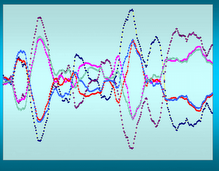Here is BGG as an example

At 11 A.M. BGG dropped through the S1 point (green on my display) after bouncing off of it twice before (15-minute charts). As far as I'm concerned it is a high probability point to buy off the 11 A.M. candle just as it transitions to the 11:15 candle and set your stop just below the 11 A.M. candle's low. At 12 A.M. it met resistance at the day's pivot point but based on the thrusting action ahead of this I I decided to keep it and see what happened next. This could also be considered a Return to 4 move which it turned out to be. Once more it went back through the pivot point and finally hit R1. At R1 you got a decisive move down at 14:00 and that would have been a great time to exit this trade. Actually there is no fault in exiting when the stock breaches R1 at 13:15 because the move would be exhausted by that time.
One thing that you might want to do is to examine this chart in the context of the candle's body and the EMA 4. One of the reasons that I use EMA 4 is that it seems to act as an immediate attractor for the stock price. And when the candle's body leaves contact with the EMA 4 either high or low there is almost an immediate attempt by the price to reestablish contact. Now I'm not suggesting that all of the trader's in the stock follow the EMA 4 - they don't but what I am suggesting is that stocks become locally oversold or overbought and the EMA 4 seems to monitor that condition.
The end of the day saw the stock go into an interesting situation - a pivot retest, a crossover, and a tweezer bottom coming off an RSI(2) < 2 all at once. Had this occurred earlier in the day it might have been actionable but I never carry over 15-minute charts from one day to the next.

2 comments:
One great trade a day.
a fantastic readBonuses click to read moreaddress check over heretry this out
Post a Comment